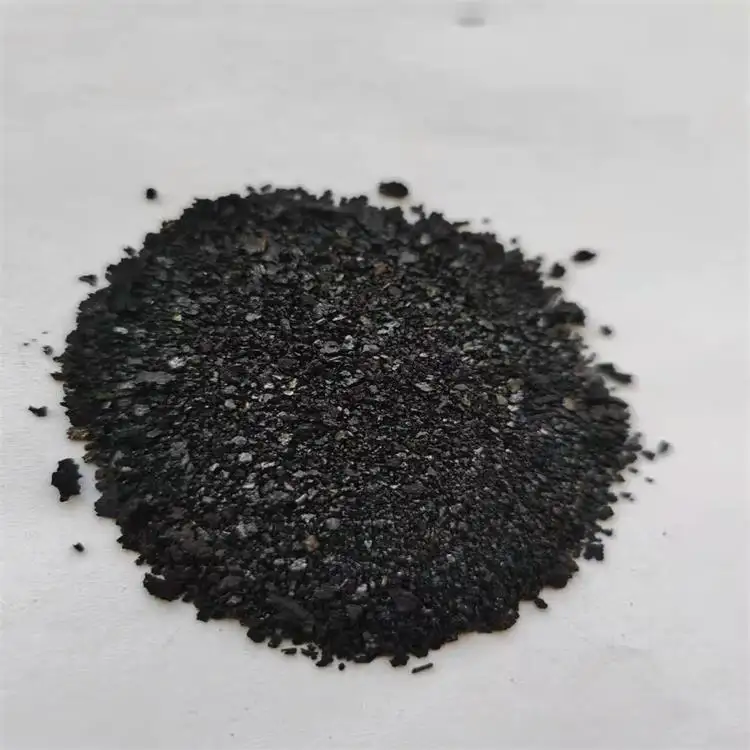Exploring VAT Blue 1 Production in Various Manufacturing Industries
The Vital Role of VAT Blue 1 in Textile Factories
In the fast-paced world of textile manufacturing, achieving vibrant colors while maintaining environmental sustainability has always been a challenge. One important chemical that has gained significant attention in the industry is VAT Blue 1. This pigment, known for its deep blue hue, plays a critical role in the dyeing process in textile factories, offering both aesthetic appeal and functional benefits.
What is VAT Blue 1?
VAT Blue 1, scientifically known as indigo, is a synthetic dye derived from a complex chemical process involving various organic compounds. Initially discovered centuries ago, indigo has been used across various cultures for dyeing fabrics. In its modern form, VAT Blue 1 is preferred in the textile industry due to its remarkable coloring properties and stability. It can provide a range of blues, from deep navy shades to lighter tonal variations, thereby expanding designers' color palettes.
The Significance of VAT Blue 1 in Textile Factories
In textile factories, VAT Blue 1 is valued for several reasons
1. Color Fastness One of the most crucial attributes of VAT Blue 1 is its exceptional color fastness. Fabrics dyed with this pigment can withstand repeated washing and exposure to light without fading. This property is particularly important for manufacturers looking to produce high-quality garments that maintain their appearance over time.
2. Versatility VAT Blue 1 can be used on various textile fibers, including cotton, wool, and synthetic blends. This versatility allows factories to diversify their product offerings and cater to different market trends.
vat blue 1 factories

3. Eco-Friendly Options With increasing awareness of environmental issues, many manufacturers are seeking sustainable dyeing processes. VAT Blue 1 can be utilized in eco-friendly dyeing methods, minimizing water and energy consumption. The industry is gradually shifting toward more sustainable practices, and the use of VAT dyes meets this demand.
Challenges in the Use of VAT Blue 1
Despite its advantages, the use of VAT Blue 1 in textile factories doesn't come without challenges. The dyeing process requires specific conditions, including the use of reducing agents to make the dye soluble, followed by oxidation to achieve its vivid shade. This complexity can result in higher production costs and necessitate skilled labor to manage the process effectively.
Furthermore, concerns surrounding the environmental impact of some of the chemicals used in conjunction with VAT Blue 1 have led to increased scrutiny. To mitigate these issues, many factories are investing in research and development to create safer and more sustainable dyeing methods.
The Future of VAT Blue 1 in Textile Manufacturing
As the textile industry evolves, VAT Blue 1 is likely to maintain its relevance. Innovations in dye technology and an ongoing commitment to sustainability will shape the future of dyeing processes in factories. Advances in biotechnology might lead to more environmentally friendly alternatives, making it possible to produce vibrant colors without harmful side effects.
Moreover, as consumers become more conscious of the garments they purchase, the demand for high-quality, eco-friendly dyed fabrics will likely rise. Factories that adopt sustainable practices involving VAT Blue 1 could find themselves at the forefront of this shift, appealing to a market increasingly driven by ethical and ecological considerations.
In conclusion, VAT Blue 1 holds a significant position within textile factories, offering both vibrant colors and opportunities for sustainable practices. As the industry addresses the challenges associated with dyeing processes, the ongoing evolution of VAT Blue 1 is a testament to the blend of tradition and innovation in textile manufacturing. As we move forward, the focus will remain on balancing aesthetic appeal with environmental responsibility, ultimately shaping a more sustainable future for the textile industry.
-
The Timeless Art of Denim Indigo Dye
NewsJul.01,2025
-
The Rise of Sulfur Dyed Denim
NewsJul.01,2025
-
The Rich Revival of the Best Indigo Dye
NewsJul.01,2025
-
The Enduring Strength of Sulphur Black
NewsJul.01,2025
-
The Ancient Art of Chinese Indigo Dye
NewsJul.01,2025
-
Industry Power of Indigo
NewsJul.01,2025
-
Black Sulfur is Leading the Next Wave
NewsJul.01,2025

Sulphur Black
1.Name: sulphur black; Sulfur Black; Sulphur Black 1;
2.Structure formula:
3.Molecule formula: C6H4N2O5
4.CAS No.: 1326-82-5
5.HS code: 32041911
6.Product specification:Appearance:black phosphorus flakes; black liquid

Bromo Indigo; Vat Bromo-Indigo; C.I.Vat Blue 5
1.Name: Bromo indigo; Vat bromo-indigo; C.I.Vat blue 5;
2.Structure formula:
3.Molecule formula: C16H6Br4N2O2
4.CAS No.: 2475-31-2
5.HS code: 3204151000 6.Major usage and instruction: Be mainly used to dye cotton fabrics.

Indigo Blue Vat Blue
1.Name: indigo blue,vat blue 1,
2.Structure formula:
3.Molecule formula: C16H10N2O2
4.. CAS No.: 482-89-3
5.Molecule weight: 262.62
6.HS code: 3204151000
7.Major usage and instruction: Be mainly used to dye cotton fabrics.

